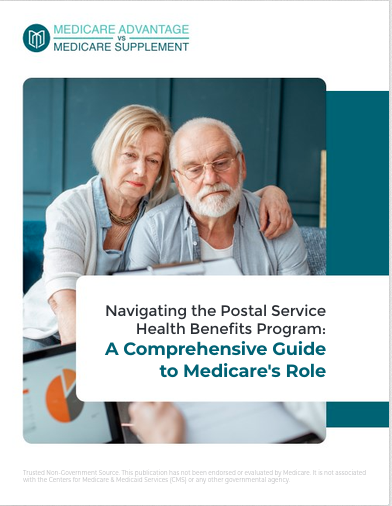Key Takeaways
-
Medicare eligibility depends on factors like age, work history, and specific medical conditions, and these criteria can be more complex than they initially seem.
-
Knowing the timelines and how different parts of Medicare fit together can save you from costly mistakes and lapses in coverage.
Understanding the Basics of Medicare Eligibility
When it comes to Medicare, most people think eligibility begins at age 65. While that’s true for the majority, there’s more to the story. Eligibility hinges on a combination of age, work history, and certain medical conditions. By understanding these factors, you can avoid surprises and plan for seamless coverage.
Age Is Just a Number—Or Is It?
Turning 65 is the most common way to become eligible for Medicare. Your Initial Enrollment Period (IEP) spans seven months: the three months before, the month of, and the three months after your 65th birthday. Missing this window could lead to late enrollment penalties, so mark your calendar.
But what if you’re younger than 65? If you’ve been receiving Social Security Disability Insurance (SSDI) for 24 months, you automatically qualify. For those with end-stage renal disease (ESRD) or amyotrophic lateral sclerosis (ALS), eligibility may begin even sooner, without the 24-month wait.
How Work History Affects Your Eligibility
Medicare is tied to your contributions to Social Security through payroll taxes. To qualify for premium-free Medicare Part A, you need at least 40 quarters (10 years) of work history. If you don’t meet this requirement, you can still enroll, but you’ll pay a monthly premium.
Spouse and Survivor Benefits
Did you know you might qualify based on your spouse’s work history? If you’re married, divorced, or widowed, you could still be eligible for premium-free Part A, even if you haven’t worked the requisite number of quarters yourself. This is especially beneficial for non-working spouses or those with limited employment history.
Breaking Down Medicare’s Parts
Each part of Medicare has its own eligibility rules, so let’s break it down:
Part A: Hospital Insurance
Most people don’t pay a premium for Part A if they’ve worked long enough. It covers inpatient hospital stays, skilled nursing facilities, and some home health care services. Even if you don’t qualify for premium-free coverage, it’s worth enrolling, as it’s generally less expensive than alternative coverage.
Part B: Medical Insurance
Part B is optional but essential for outpatient care like doctor visits, lab tests, and preventive services. You’ll pay a standard monthly premium unless you’re subject to income-related adjustments. If you’re delaying Part B due to other coverage, be sure to enroll during a Special Enrollment Period (SEP) to avoid penalties.
Part C: Medicare Advantage
Eligibility for Part C hinges on being enrolled in both Parts A and B. Medicare Advantage plans offer an all-in-one alternative, but they’re provided through private insurers. While you won’t see specific plans or prices here, it’s worth noting that eligibility can also depend on residency within a plan’s service area.
Part D: Prescription Drug Coverage
To get Part D, you must be enrolled in either Part A or Part B. Like Medicare Advantage, this coverage is offered through private plans, so details vary. Don’t skip Part D if you don’t have creditable drug coverage elsewhere, as late enrollment penalties can add up quickly.
Common Pitfalls to Avoid
Navigating Medicare eligibility can feel like walking through a minefield, but being aware of common mistakes can help.
Missing Enrollment Deadlines
Failing to enroll during your Initial Enrollment Period or a Special Enrollment Period could leave you with late penalties or gaps in coverage. For example, Part B’s late enrollment penalty increases your monthly premium by 10% for each year you were eligible but didn’t enroll.
Not Understanding Creditable Coverage
If you have health coverage through an employer, make sure it’s considered creditable for Medicare purposes. This designation means it’s as good as or better than Medicare coverage. Without it, you could face penalties when you eventually enroll in Part D.
Overlooking Medicare’s Coordination with Other Insurance
If you’re covered by an employer plan after turning 65, Medicare may still be the primary payer. Understanding how your coverage coordinates can prevent unexpected bills.
The Role of Special Enrollment Periods (SEPs)
Life happens, and Medicare recognizes that. Special Enrollment Periods allow you to enroll outside of standard timeframes due to qualifying events, such as:
-
Losing employer-sponsored coverage
-
Moving to a new area with different plan options
-
Becoming eligible for Medicaid
These periods typically last two months from the qualifying event, so acting quickly is crucial.
Medicare for Younger Beneficiaries
It’s not just seniors who qualify. If you’re under 65 and meet specific criteria, Medicare can offer a lifeline.
Disability-Based Eligibility
After 24 months of receiving SSDI, you’ll automatically be enrolled in Medicare Parts A and B. There’s no need to apply, but be sure to understand what’s covered and whether you need supplemental insurance.
ESRD and ALS
For those with ESRD, Medicare coverage can begin as early as the fourth month of dialysis. If you’re undergoing home dialysis, coverage may start even sooner. ALS patients qualify immediately upon receiving SSDI benefits.
Why Timing Matters
Delaying enrollment can have financial and coverage consequences. To avoid these, align your Medicare decisions with your retirement plans. For instance, if you’re planning to retire at 67, you may need to enroll in Medicare at 65 to avoid penalties, even if you’re still covered by an employer plan.
Steps to Take Now
Preparation is key. Here’s what you can do today to ensure a smoother transition:
-
Verify Your Work History: Check your Social Security statement to confirm your eligibility for premium-free Part A.
-
Mark Your Calendar: Note your Initial Enrollment Period or any upcoming Special Enrollment Periods.
-
Evaluate Current Coverage: Determine whether your existing insurance is creditable and how it coordinates with Medicare.
-
Research Costs: Understand premiums, deductibles, and copayments for Parts A, B, and D.
-
Consider Supplemental Insurance: Look into Medigap or Medicare Advantage plans to fill gaps in coverage, but make sure you understand their eligibility requirements.
Planning Ahead for Peace of Mind
Medicare eligibility may seem straightforward at first glance, but the details reveal a much more intricate picture. By staying informed and proactive, you can sidestep costly mistakes and ensure you’re covered when you need it most. From understanding your Initial Enrollment Period to navigating Special Enrollment Periods, taking the time to prepare can save you headaches down the line.










